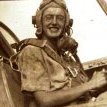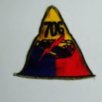-
Posts
1,877 -
Joined
-
Last visited
-
Days Won
1
viscount806x last won the day on September 13 2012
viscount806x had the most liked content!
About viscount806x

- Birthday 02/03/1950
Contact Methods
-
Website URL
http://
-
ICQ
0
Profile Information
-
Gender
Male
-
Location
Vectis, heart in the West Riding....
-
Interests
Stayin' alive...
viscount806x's Achievements

Very Obsessed Member (5/9)
674
Reputation
-
viscount806x started following 1/72nd Bristol Superfreighter - an aftermarket resin parts question , Kotare Spitfire Pr. Mk.1 , Supermarine Scimitar extra weight and 7 others
-
I saw this too but wondered what the score was with pre ordering for UK delivery. Are there any members in UK who have experience of this with Kotare ?
-

Supermarine Scimitar extra weight
viscount806x replied to GiampieroSilvestri's topic in Aircraft Cold War
I have seen Dynavector kits for sale which have included resin u/c parts in place of the metal ones. I assumed others have built the Scratch. kit and used the white metal from Dynavector. Shame there isn't the demand for brass parts from Ali's Aerocraft range. Maybe there is...... -
Some of the 3-views have been noted as being a bit awry in this book. Not sure how good the -221 is though. Best to be wary perhaps.
-
I read a short bit of something which told me that it was a pair of infra red lamps (two presumably in case one filament failed). It was in the event of coming up behind a Lancaster fitted with infra red gun laying equipment in it's rear turret, and so that it would be recognised as a 'friendly' and not a German night fighter homing in and therefore not accidentally shot at by the Lancs rear gunner. I'm unsure as to what the Lancs rear gunner had as his part of Z Equipment. Infra red goggles perhaps ? Someone on BM will know for sure.
-
For me, two halves, top and bottom. Traditional thinning methods can then be employed -easier than filling a seam on the lower wing. Alternatively, a 3D printed wing ! Cheers.
- 79 replies
-
The only news I can think of was the discussion on the rush by KP to get a rejuvenated Sword series out to capture the topicality of the IBG kits.
-

Vickers Viscount 800 - wing root question
viscount806x replied to Neil Whiteley-Bolton's topic in Classic - up to 1968
Probably a close in view from the rear would be ideal, that would show you the shape of the fairing and the join lines. There was a cutaway towards the back end of it so that the inner flap section was cleared. The Flaps went almost right up to the fuselage side at their trailing edges and the fairing is very subtle in it's shaping. In 1/144 it probably isn't too challenging to recreate and t.b.h. The S&M kit is a bit tongue in cheek regarding accuracy of shape in places and a very simplified kit, albeit a good canvas to show colour schemes on. I still prefer my old Hawk/Glencoe kits for a better look and there are/were V800 conversions around for them at one time. -
I turned up two known articles in my possession. Aeroplane Monthly, Aug 1977 carried quite a good article written by one of the test pilots. Two airframes were built of which one is preserved in the 'States on a pole. Both flew a total of just twelve times of which eleven ended in a full scale emergency recovery before the program (sic) was terminated. No mention of asymmetric intakes but plenty of other negatives came up. No images to compare intakes. Second article was in PAM News, a long defunct UK modelling periodical, Aug/Sept 1978 (issue 23). A competition was launched to find the best built model. Plans are included, allegedly supplied by Republic Aviation. Also several good head on images. No indications of intake asymmetry here either. There was also something in Scale Aviation Modeller magazine Aug 2006, photos, but I haven't got it available right now, sorry. Hope this helps. p.s. There are copies of the first two readily available at The Magazine Exchange (Aeroplane Monthly) and Ebay (PAM News 23) for very reasonable prices, having just had a look.
-

Vickers Viscount 800 - wing root question
viscount806x replied to Neil Whiteley-Bolton's topic in Classic - up to 1968
On the real item, the wing to body joint was streamlined over with a sculpted fairing which was a gentle curve from the vertical at the fuselage to the horizontal where it fastened on to the upper inner wing surface so, no, there wasn't a parallel front to back seam at this point. Get a look at some photos, the Airliner Tech series book is good but there are many others around. Cheers -
I expect @sabrejetwill be along in a minute but you might be wary of the Heller 'F' because it purports to have a 6-3 slatted and extended span wing. The CA-27 fleet had some short chord slatted (Mk.30)and mostly the 6-3 'hard edge' (Mk.31 & 32) with the surviving examples of the former mostly converted to the latter. Regarding Heller wing sweep, that may be moot anyway but is it incorrect, considering the above ? The Hobbycraft Sabres mentioned by Martin also came in the two versions of 6-3 wing so make certain that a slatted 6-3 winged kit isn't accidentally obtained.
-
Pardon me but those three images look alike to me. The middle one still has, I think, the fasteners on the front but they are in shade.
-
You could probably choose your colour. Some were clear, some brown, others just looked a dirty grey. All would need to be as transparent as possible to received radio energy. Nowadays we call it 'dielectric' material and is a form of glass fibre but back in those days, did they have that material ? The materials which was around then would probably be bakelite type, an early form of plastic and certainly old style df loop units on some of the aircraft from the 1950s were like that, very brittle material and those sorts of colours. I'm guessing actual colours would be down to certain mixes used on the day and might be quite variable, even on aircraft of the same type. Regarding paint, that wouldn't do the aerial receiving performance much good but maybe some did get painted. I will look out my wartime colour book and update this if I can see anything specific.
-
Astrolan figured heavily during my aviation career, which was a tan colour. There was also long ago, a red tinted product which did the same thing but unsure of it's name. Never Waxolyl though, although preserved aircraft might have been so coated for economic reasons. Don't think the latter would have been approved for use on live or potentially live airframes.







![RuSH[UA]](https://www.britmodeller.com/forums/uploads/monthly_2024_05/64836110_2279396565488033_9160863065648922624_n.thumb.jpg.dccd18377f084408e60e9ec02ce90357.jpg)



